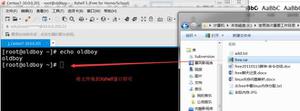23、python基础学习-lesson_file_2

1 #!/usr/bin/env python2 #__author: hlc
3 #date: 2019/5/30
4
5 # 读操作
6 # f = open("小重山","r",encoding="utf-8")
7 # a = f.readline() # 打印一行
8 # print(a) # 昨夜寒蛩不住鸣。
9 # f.close()
10
11 # f = open("小重山","r",encoding="utf-8")
12 # a = f.readlines() # 打印所有行,以列表的形式输出
13 # print(a) # 所有
14 # f.close()
15
16 # f = open("小重山","r",encoding="utf-8")
17 # for i in f.readlines() : # 遍历所有行
18 # print(i.strip()) # 不添加strip 会多出换行符
19 # f.close()
20
21 # 追加
22 # number = 0
23 # f = open("小重山","r",encoding="utf-8")
24 # for i in f.readlines() : # 遍历所有行
25 # number += 1
26 # if number == 6:
27 # print(i.strip(),"ikeit")
28 # else:
29 # print(i.strip())
30 # f.close()
31
32 # number = 0
33 # f = open("小重山","r",encoding="utf-8")
34 # for i in f.readlines() : # 遍历所有行
35 # number += 1
36 # if number == 6:
37 # i = ''.join([i.strip(),"ikeit"]) #取代+号
38 # print(i.strip())
39 # f.close()
40
41 # 昨夜寒蛩不住鸣。
42 # 惊回千里梦,已三更。
43 # 起来独自绕阶行。
44 # 人悄悄,帘外月胧明。
45 # 白首为功名。
46 # 旧山松竹老,阻归程。ikeit
47 # 欲将心事付瑶琴。
48 # 知音少,弦断有谁听?
49
50 # number = 0
51 # f = open("小重山","r",encoding="utf-8")
52 # print(f.tell()) # 获取光标所在位置
53 # print(f.read(5))
54 # print(f.tell())
55 # print(f.seek(0)) # 重置光标的位置
56 # print(f.read(3))
57 # f.close()
58
59 # flush 将缓存中的数据刷至磁盘
60 # import sys,time
61 # for i in range(30) :
62 # sys.stdout.write("*")
63 # sys.stdout.flush() # 将缓存中的数据刷至磁盘
64 # time.sleep(0.1)
65
66 # truncate
67 # f = open("小重山","a",encoding="utf-8")
68 # f.seek(10)
69 # f.truncate() # 截断文件
70 # f.close()
71
72 # r+ 可以读,必须在最后追加
73 # f = open("小重山","r+",encoding="utf-8")
74 # print(f.readlines())
75 # f.write("岳飞")
76 # f.close()
1 # 将文件输出到另一个文件2 # f_read = open("小重山","r",encoding="utf-8")
3 # f_write = open("小重山2","w",encoding="utf-8")
4 # number = 0
5 # for i in f_read :
6 # number += 1
7 # if number == 5 :
8 # i = "".join([i.strip(),"hello world\n"])
9 # f_write.write(i)
10 # f_read.close()
11 # f_write.close()
12 #
13 # 昨夜寒蛩不住鸣。
14 # 惊回千里梦,已三更。
15 # 起来独自绕阶行。
16 # 人悄悄,帘外月胧明。
17 # 白首为功名。hello world
18 # 旧山松竹老,阻归程。
19 # 欲将心事付瑶琴。
20 # 知音少,弦断有谁听?
1 # 字符串和字典的转换2 # a = str({"beijing":{"1:3"}}) # 将字典装换成字符串
3 # print(a) # {'beijing': {'1:3'}}
4 # print(type(a)) # <class 'str'>
5 # a = eval(a) # 将字符串转换成字典
6 # print(type(a)) # <class 'dict'>
7 # print(a["beijing"]) # {'1:3'}
8
9 # with 语句
10 # 为了避免打开文件后忘记关闭,可以通过with管理上下文
11 # 管理一个对象
12 # with open("log","r") as f :
13 # pass
14 # 如此方法,当with代码块执行完毕之后,内部会自动关闭并释放文件资源
15 # 在python 2.7之后,with支持可以同时对多个文件的上下文进行管理
16 # 同时管理多个对象
17 # with open("log1") as obj1 , open("log2") as obj2 :
18 # pass
以上是 23、python基础学习-lesson_file_2 的全部内容, 来源链接: utcz.com/z/387372.html




